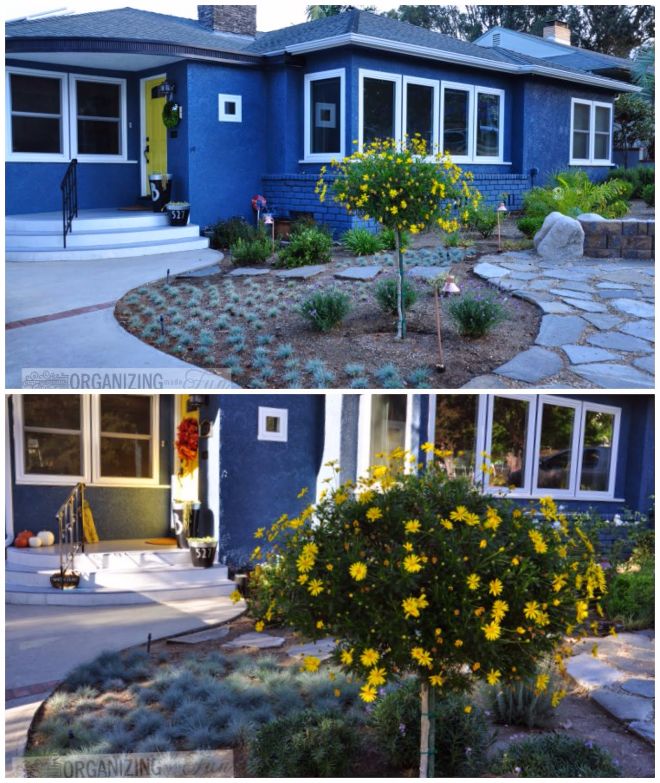With researchers predicting increasing drought conditions for much of the U.S., homeowners realize that drought-tolerant landscaping projects not only make aesthetic sense, but also financial and environmental sense. Organizing Made Fun's DIY and organizing blogger Becky recently presented her followers with an incredibly informative guide to the drought-tolerant yard.
"Our drought here in Southern California has only gotten worse, so it has already proven to be a smart decision for us to 'go native,' " the savvy blogger stated. "We've seen a ton of growth in our front yard in the last six months! I've also added more color to the front yard and other places around our house."
Advertisement
Becky felt determined not to give up pops of coordinating color with her smart drought-tolerant lawn. By not planting too densely and allowing room for growth, she added color in areas that previously held a blanket of monochromatic and water-thirsty grass.
Despite the high price — a few thousand dollars for plants — for an all-at-once project and a strict four-month competition deadline for government rebate eligibility, the blogger seems elated with her final product.
Drought-tolerant landscaping doesn't need to be boring either. Look at the variety of plants used in this project:
1. Nandina 'Gulf Stream'
2. Schefflera arboricola
3. Acorus
4. Liriope
5. Rosemary 'Tuscan Blue'
6. Pittosporum tenuifolium
7. Mexican feather grass
8. 'Iceberg' rose
9. Hebe
10. Rhaphiolepis umbellata
2. Schefflera arboricola
3. Acorus
4. Liriope
5. Rosemary 'Tuscan Blue'
6. Pittosporum tenuifolium
7. Mexican feather grass
8. 'Iceberg' rose
9. Hebe
10. Rhaphiolepis umbellata
11. Euonymus 'Microphyllus'
12. Buxus
13. Phoenix roebelenii
14. Euryops patio tree
15. Osteospermum
16. Diosma
17. Lavender
18. Agapanthus 'Peter Pan'
19. Erysimum Bowles wall flower
20. Festuca
21. Myoporum Parvifolium
12. Buxus
13. Phoenix roebelenii
14. Euryops patio tree
15. Osteospermum
16. Diosma
17. Lavender
18. Agapanthus 'Peter Pan'
19. Erysimum Bowles wall flower
20. Festuca
21. Myoporum Parvifolium
Full details on this drought-tolerant renovation can be found at Becky's website, Organizing Made Fun. You can also view updates showing several months of growth.
While many look at lawn-removal projects strictly from the view of replacement plants, remember there are other ways to turn water-guzzling areas into great usable spaces. Many projects, including gravel landscaping and creating outdoor dining areas, provide eye-catching appeal without jeopardizing your water supply. Also, edibles in areas designated as raised beds allow the water you use to provide beauty and fresh food and herbs for your kitchen.
Many counties around the country are now offering landscaping rebates for replacing lawns with more water-wise options. Check with your local county for such options.
Advertisement
If someone you know is looking for drought-friendly landscaping ideas, make sure to SHARE this post and help their ideas bloom!





